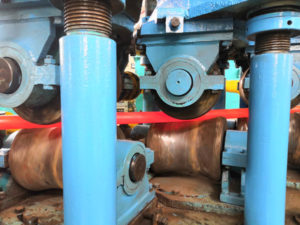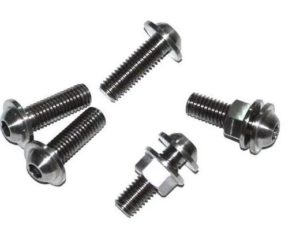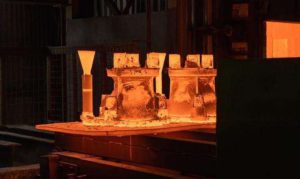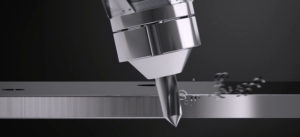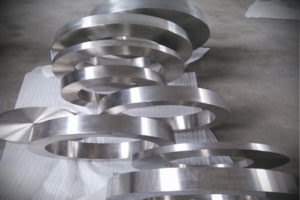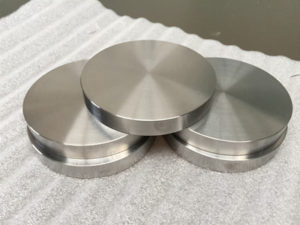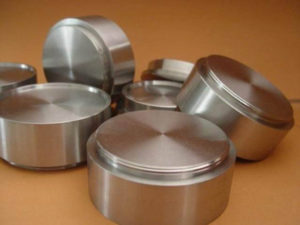In magnetron sputtering process, titanium target is one of the most commonly used targets. Titanium target not only has good adhesion, but also can make a variety of beautiful colors by using titanium target and appropriate reaction gas. Let me pick up all the characteristics and advantages of titanium.
1.First of all, it is certain that titanium target can make many kinds of colors, such as titanium gray, gun gray, black, imitation gold, coffee, blue, purple and so on. What new colors can you add?
2.Secondly, titanium has good adhesion to ceramic and glass substrates, so titanium can be used as a substrate material with poor adhesion. Titanium can also be used as a material for thin film resistors or thin film capacitors.

3.Titanium adsorbs active gases (such as CO, CO, CO 2, N2, O 2 and water vapor above 650 C) very strongly. Fresh Ti film evaporated on the mercury wall forms a surface with high adsorption capacity. It has excellent adsorption performance and can react with almost all gases except inert gases. This property makes Ti widely used as getter in ultra-high vacuum pumping system, such as Ti sublimation pump and sputtering ion pump.
4.Corrosion resistance. Titanium is a very active metal with low equilibrium potential and high thermodynamic corrosion tendency in medium. But in fact, titanium is very stable in many media, such as oxidizing, neutral and weak reductive media. This is because titanium and oxygen have a great affinity. In air or medium containing oxygen, a dense, strong adhesion and inert oxide film is formed on the surface of titanium, which protects the titanium matrix from corrosion. Even due to mechanical wear, it can quickly self-heal or regenerate. This indicates that titanium is a metal with strong passivation tendency. Titanium oxide film at medium temperature below 315 C always maintains this characteristic. Titanium has metallic luster and ductility. The density is 4.5 g/cubic centimeter. The melting point is 1660 +10. Boiling point 3287 C. Chemical valence + 2, +3 and + 4. The ionization energy is 6.82 electron volts. Titanium is characterized by low density, high mechanical strength and easy processing. The plasticity of titanium depends mainly on its purity. The more pure titanium is, the greater the plasticity is. It has good corrosion resistance and is not affected by atmosphere and sea water. At room temperature, it will not be corroded by hydrochloric acid under 7%, sulfuric acid below 5%, nitric acid, aqua regia or dilute alkali solution; only hydrofluoric acid, concentrated hydrochloric acid, concentrated sulfuric acid can act on it.
5.Titanium is biophilic. In the human body, it can resist the corrosion of secretions and is non-toxic. It is suitable for any sterilization method. Therefore, it is widely used to make medical instruments, artificial hip joint, knee joint, shoulder joint, hypochondriac joint, skull, active heart valve, bone fixation clip. When new muscle fibrous rings are wrapped in these “titanium bones”, these titanium bones begin to maintain the normal activities of the human body. Titanium is a non-magnetic metal, and will not be magnetized in a large magnetic field. It is non-toxic and has good compatibility with human tissues and blood, so it is adopted by the medical profession.
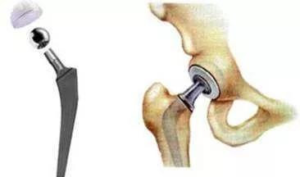
6. Good heat resistance and low temperature resistance.
The new titanium alloy can be used for a long time at 600 C or higher. Low temperature titanium alloys, such as titanium alloy TA7 (Ti-5Al-2.5Sn), TC4 (Ti-6Al-4V) and Ti-2.5Zr-1.5Mo, have higher strength with lower temperature, but less plastic change. It is an ideal material for cryogenic containers, tanks and other equipment to maintain good ductility and toughness at low temperatures of – 196 – 253, avoiding cold brittleness of metals.
7. Strong Anti-Damping Performance
Compared with steel and copper, titanium has the longest vibration attenuation time when it is subjected to mechanical and electrical vibration. This property of titanium can be used as vibration element of tuning fork, medical ultrasonic pulverizer and vibration film of advanced loudspeaker.
8. Tensile strength is close to yield strength.
This property of titanium shows that its yield strength ratio (tensile strength/yield strength) is high, which indicates that the plastic deformation of titanium metal is poor during forming. Because the ratio of yield limit to elastic modulus of titanium is large, the resilience of titanium during forming is great.
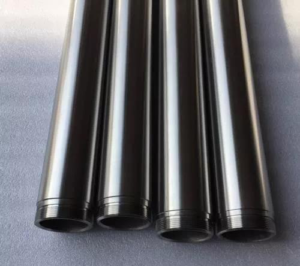
9. Good heat transfer performance
Although the thermal conductivity of titanium metal is lower than that of carbon steel and copper, its wall thickness can be greatly reduced due to its excellent corrosion resistance, and the heat transfer mode between surface and steam is dropwise condensation, which reduces the heat group, and the thermal resistance of titanium surface can be reduced without scaling, thus the heat transfer performance of titanium can be significantly improved.
10. Low modulus of elasticity
The elastic modulus of titanium at room temperature is 106.4 Pa, which is 57% of that of steel.
